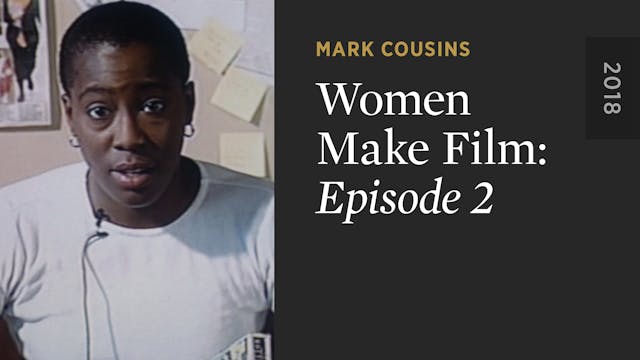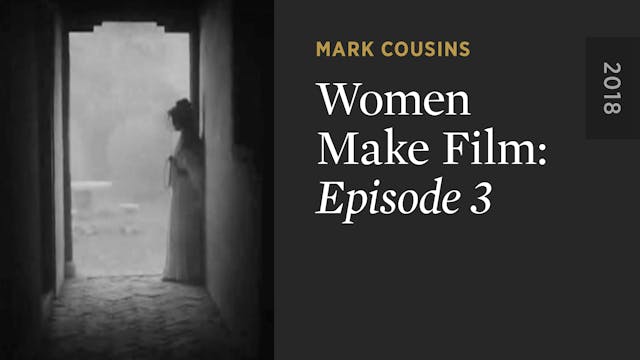Directed by Mark Cousins • 2018 • United Kingdom
“Openings”
With examples from 1943 to 2013, from China to Iran, Australia to Finland, we look at how to open a film: from mysterious, direct, floating, foreboding beginnings to plunging straight in. All are instructive in how to create an immediate world.
“Tone”
What’s the tone of a film—not its story or theme, but what its world feels like? Back to Hollywood and director Dorothy Arzner with MERRILY WE GO TO HELL and its glamorous, amorous mood. This chapter looks at the myriad ways in which directors set the tones of their films: delight, anger, poetry, double tones, moral seriousness, caring, edginess, violence.
Up Next in Women Make Film
-
WOMEN MAKE FILM: Episode 2
Directed by Mark Cousins • 2018 • United Kingdom
“Believability”
It’s easy to spot, but not so easy to understand. Believability is about simple human stories, truth about life, real emotions, responding to the world. How do directors create a reality without it feeling fake? True stories can he... -
WOMEN MAKE FILM: Episode 3
Directed by Mark Cousins • 2018 • United Kingdom
“Conversation”
A basic human interaction—how to make it cinematic? Angela Schanelec directs us to focus on body language in PLACES IN CITIES, Cecile Tang uses the zoom as guide through the emotional shifts in THE ARCH, and Sofia Coppola in THE VIR... -
WOMEN MAKE FILM: Episode 4
Directed by Mark Cousins • 2018 • United Kingdom
“Staging”
Scene staging is an element of film form pointing clearly to cinema’s origin: theater. Kinuyo Tanaka uses staging in THE MOON HAS RISEN to shape the scene’s invisible geometry, accentuating the tension between characters. Maren Ade stage...



